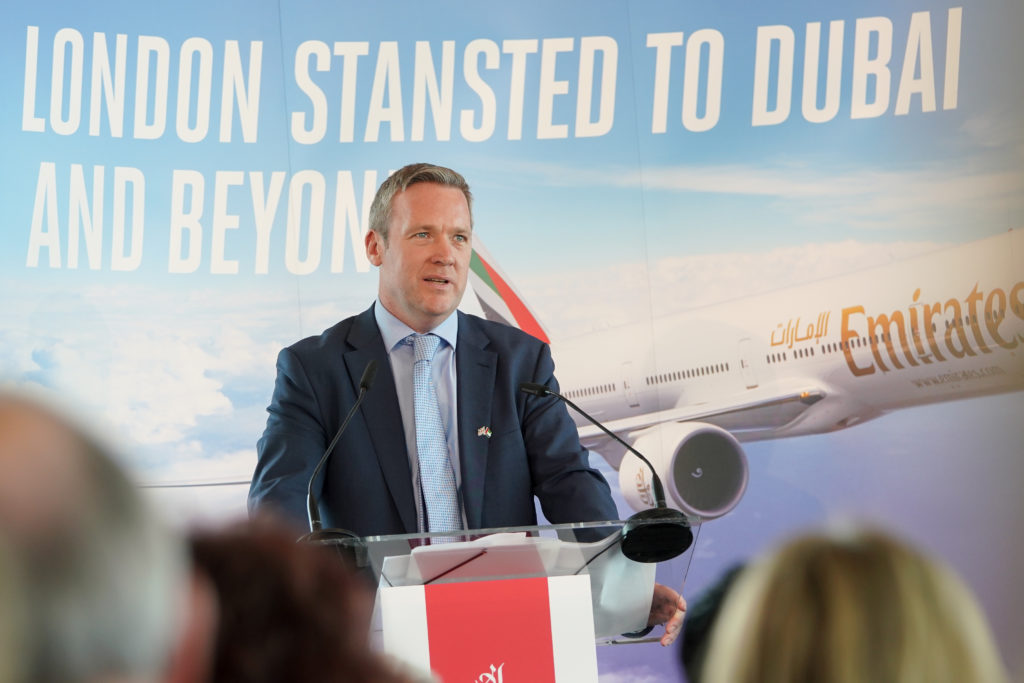London Stansted CEO Ken O’Toole has today (September 12) set out how the airport will provide London with the international connectivity required to enable it to continue to grow and prosper over the next decade.
Speaking at the London Infrastructure Summit 2018, O’Toole updated the audience of 500 infrastructure industry experts on the £600m (US$781m) investment program currently underway at London Stansted and how that investment will enable the airport to deliver as much as 50% of London’s total expected passenger growth over the next decade.
In addition, he outlined how – if the airport’s current planning application to serve 43 million passengers a year is approved – it will not only grant London Stansted a license to grow but will also give the green light to continued economic growth for London and the East of England.
O’Toole has also called on government to match the airport’s growth ambitions with swift and supportive action, including: delivering an aviation strategy that sets out a clear plan for maximizing the potential of the UK airports most capable of driving economic growth in their regions and for UK PLC; leading the delivery of short-term rail improvements to the London-Stansted-Cambridge line; introducing long overdue reforms to Air Passenger Duty (APD); and committing to increased investment to reduce queue times at the border for inbound passengers to the UK.
In the speech, O’Toole said, “London Stansted has seen strong year-on-year growth of 9 % during the summer season from April. We’re London’s fastest growing major airport, and have seen a host of new long haul route launches, complementing the continued growth of our short haul network.
“This growth is set to continue and we are forecast to deliver up to 50% of London’s total expected passenger growth over the next decade. We will do this by making best use of the available runway capacity we currently have, capacity that is unlocked by a £600m investment program currently underway, and which will see a new arrivals terminal open in less than two years’ time.
“London has never been in greater need of a vibrant aviation market– as we look to the future we need to ensure we have the connectivity to trade globally, attract overseas investment and encourage tourists to our shores. Stansted will be critical to achieving those objectives.
“Stansted is the London airport with most available capacity today. London and the East of England will remain both resilient and buoyant, and to keep stimulating growth for the airport and wider economy, we are transforming our facilities through our £600 million investment programme.
“It’s vital for the UK economy, and London, that this country has the best possible aviation connections and there is an urgent need to actively support airports, like London Stansted, that can deliver that access now. In February of this year we put forward a strong planning application to increase the cap on passenger numbers that are allowed use Stansted from 35 million to 43 million passengers per annum, an increase we will deliver within existing limits on flight movements and noise impacts.
“We’ve had tremendous support from business, local authorities, investment agencies and other stakeholders to our plans and that application, which will be considered by UDC shortly. Our stakeholders understand the value of connectivity and they know that passengers, whether they be on leisure or business, want to travel from an airport that is most convenient for them to access and provides the destinations they want to travel to.
“If you are a major international bioscience company in the Cambridge cluster, or an investment bank or tech company in the City of London or on the eastern edge toward Silicon Roundabout, then that airport is Stansted.
“There is a huge amount going on at London Stansted and as we continue to grow, transform and expand over the next decade we will not only continue to be one of the most interesting places to be but also play a leading role in delivering the aviation capacity that London so desperately needs. And as we do so, we will continue to help make London, and the East of England, some of the best places in the world to live, work and do business.”

